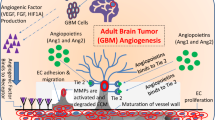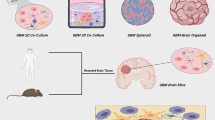Abstract
Glioblastoma multiform is the most common and aggressive type of brain tumor. The overexpression of ecto-5′-nucleotidase/CD73 (ecto-5′-NT/CD73), an adhesion molecule and the main enzymatic source of extracellular adenosine, has been reported in tumor cells, and it is emerging as a component of glioma progression. Here, we evaluated the involvement of ecto-5′-NT/CD73 in cell adhesion through its interaction with different components of the extracellular matrix in the human U138MG glioma cell line. The results indicated that adenosine induced an increase in glioma cell adhesion. The treatment of glioma cells with adenosine receptor antagonists, APCP (α,β-methylene ADP) and dipyridamole prevented the adenosine effect, indicating the participation of extracellular and intracellular signaling pathways in cell adhesion mediated by adenosine. The ECM protein laminin (lam) and chondroitin sulfate (ChS) modulated the ecto-5′-NT/CD73 activity and glioma adhesion in a parallel manner, suggesting the involvement of purinergic signaling in the effects mediated by the extracellular matrix. Taken together, these results suggest that ecto-5′-NT/CD73, an important producer of extracellular adenosine, may modulate glioma cell adhesion and tumor cell–extracellular matrix interactions.




Similar content being viewed by others
References
Sathornsumetee S, Rich JN, Reardon DA (2007) Diagnosis and treatment of high-grade astrocytoma. Neurol Clin 25:1111–1139
Kros JM (2011) Grading of gliomas: the road from eminence to evidence. J Neuropathol Exp Neurol 70(2):101–109
Schneider T, Mawrin C, Scherlach C, Skalej M, Firsching R (2010) Gliomas in adults. Dtsch Arztebl Int 107(45):799–808
Nakada M, Nakada S, Demuth T, Tran NL, Hoelzinger DB, Berens ME (2006) Molecular targets of glioma invasion. Cell Mol Life Sci 64:458–478
Zámecnik J, Vargová L, Homola A, Kodet R, Syková E (2003) Extracellular matrix glycoproteins and diffusion barriers in human astrocytic tumours. Neuropathol Appl Neurobiol 30:338–350
Bouterfa H, Darlapp AR, Klein E, Pietsch T, Roosen K, Tonn JC (1999) Expression of different extracellular matrix components in human brain tumor and melanoma cells in respect to variant culture conditions. J Neuro-Oncol 44:23–33
Sim H, Hu B, Viapiano MS (2009) Reduced expression of the hyaluronan and proteoglycan link proteins in malignant gliomas. J Biol Chem 284(39):26547–26556
Goldbrunner RH, Bernstein JJ, Tonn JC (1999) Cell-extracellular matrix interaction in glioma invasion. Acta Neurochir 141:295–305
Burnstock G (2007) Physiology and pathophysiology of purinergic neurotransmission. Physiol Rev 87:659–797
White N, Burnstock G (2006) P2 receptors and cancer. TRENDS Pharmoacol Sci 27(4):211–217
Zimmermann H (2001) Ectonucleotidases: some recent developments and a note on nomenclature. Drug Develop Res 52:44–56
Robson SC, Sévigny J, Zimmermann H (2006) The E-NTPDase family of ectonucleotidases: structure function relationship and pathophysiological significance. Purinergic Signal 2:409–430
Spychala J (2000) Tumor-promoting functions os adenosine. Pharmacol Ther 87:161–173
Stagg J, Divisekera U, McLaughlin N, Sharkey J, Pommey S, Denoyer D, Dwyer KM, Smyth MJ (2010) Anti-CD73 antibody therapy inhibits breast tumor growth and metastasis. PNAS 107(4):1547–1552
Stagg J, Smyth MJ (2010) Extracellular adenosine triphosphate and adenosine in cancer. Oncogene 29:5346–5358
Sadej R, Spychala J, Skladanowski AC (2006) Expression os ecto-5′-nucleotidase (em, CD73) in cell lines from various stages of human melanoma. Moma Res 16:213–222
Ujházy P, Berleth ES, Pietkiewicz JM, Kitano H, Skaar JR, Ehrke MJ, Mihich E (1996) Evidence for the involvement of ecto-5′-nucleotidase (CD73) in drug resistance. Int J Cancer 68:493–500
Bavaresco L, Bernardi A, Braganhol E, Cappellari AR, Rockenbach L, Farias PF, Wink MR, Cañedo AD, Battastini AMO (2008) The role of ecto-5′-nucleotidase in glioma cell line proliferation. Mol Cell Biochem 319(1–2):61–68
Sadej R, Inai K, Raifur Z, Ostapkowicz A, Kohler J, Skladanowski AC, Mitchell BS, Spychala J (2008) Tenascin C interacts with Ecto-5′-nucleotidase (eN) and regulates adenosine generation in cancer cells. Biochim Biophys Acta 1782(1):35–40
Zhou P, Zhi X, Zhou T, Chen S, Li X, Wang L, Yin L, Shao Z, Ou Z (2007) Overexpression of ecto-5′-nucleotidase (CD73) promotes T-47D human breast cancer cells invasion and adhesion to extracellular matrix. Cancer Biol Ther 6(3):426–431
Stochaj U, Richter H, Mannherz HG (1989) Chicken gizzard 5′-nucleotidase is a receptor for the extracellular matrix component fibronectin. Europ J Cell Biol 51:335–338
Mehul B, Doyennette-Moyne M-A, Aubery M, Codogno P, Mannherz HG (1992) Enzymatic activity and in vivo distribution of 5′-nucleotidase, an extracellular matrix binding glycoprotein, during the development of chicken striated muscle. Exp Cell Res 203:62–71
Wang L, Zhou X, Zhou T, Ma D, Chen S, Zhi X, Yin L, Shao Z, Ou Z, Zhou P (2008) Ecto-5′-nucleotidase promotes invasion, migration and adhesion of human breast cancer cells. J Cancer Res Clin Oncol 134(3):365–372
Wink MR, Braganhol E, Tamajusuku ASK, Schwartsmann G, Sarkis JJF, Battastini AMO (2003) Altered extracellular ATP, ADP and AMP catabolism in glioma cell lines. Cancer Lett 198:211–218
Chan KM, Delfert D, Junger KD (1986) A direct colorimetric assay for Ca2+-stimulated ATPase activity. Anal Biochem 157:375–380
Bradford MM (1976) A rapid a sensitive method for the quantitation of microgram quantities of protein utilizing the principle of protein-dye binding. Anal Biochem 72:248–254
Yegutkin GG (2008) Nucleotide- and nucleoside-converting ectoenzymes: important modulators of purinergic signalling cascade. Biochem Biophys Acta 1783(5):673–694
Castillo CA, Albasanz JL, Fernández M, Martín M (2007) Endogenous expression of adenosine A1, A2 and A3 receptors in rat C6 glioma cells. Neurochem Res 32:1056–1070
Woodhouse EC, Amanatullah DF, Schetz JA, Liotta LA, Stracke ML, Clair T (1998) Adenosine receptor mediates motility in human melanoma cells. Biochem Biophys Res Commun 246(3):888–894
Sanai N, Alavrez-Buylla A, Berger MS (2005) Neuronal stem cells and the origin of gliomas. N Engl J Med 353:811–822
Awad AS, Rouse M, Liu L, Vergis AL, Rosin DL, Linden J, Sedor JR, Okusa MD (2008) Activation of adenosine 2A receptors preserves structure and function of podocytes. J Am Soc Nephrol 9(1):59–68
Sohail MA, Hakim W, Watanabe A, Zipprich A, Groszmann RJ, Dranoff JA, Torok NJ, Mehal WZ (2009) Adenosine induces loss of actin stress fibers and inhibits contraction in hepatic stellate cells via Rho inhibition. Hepatology 49(1):185–194
Zhi X, Sifeng C, Zhou P, Shao Z, Wang L, Ou Z, Yin L (2007) RNA interference of ecto-5′-nucleotidase (CD73) inhibits human breast cancer cell growth and invasion. Clin Exp Metastasis 24:439–448
Dieckhoff J, Mollenhauer J, Kühl U, Niggemeyer B, Mark K, Mannhers HG (1986) The extracellular matrix proteins laminin and fibronectin modify the AMPase activity of 5′-nucleotidase from chicken gizzard smooth muscle. Fed Europ Biochem Soc 195:82–86
Bellail AC, Hunter SB, Brat DJ, Tan C, Meir EGV (2004) Microregional extracellular matrix heterogeneity in brain modulates glioma cell invasion. Int J Biochem Cell Biol 36:1046–1069
Theocharis AD, Skandalis SS, Tzanakakis GN, Karamanos NK (2010) Proteoglycans in health and disease: novel roles for proteoglycans in malignancy and their pharmacological targeting. FEBS 277:3904–3923
Jacobson KA, Hoffmann C, Cattabeni F, Abbracchio P (1999) Adenosine induced cell death: evidence for receptor-mediated signaling. Apoptosis 4:197–311
Fishman P, Bar-Yehuda S, Wagman L (1998) Adenosine and other low molecular weight factors released by muscle cells inhibit tumor cell growth: possible explanation for the rarity metastases in muscle. Cancer Res 58:3181–3187
Brambilla R, Cattabeni F, Ceruti S, Barbieri D, Franceschi C, Kim YC, Jacobson KA, Klotz KN, Lohse MJ, Abbrachio MP (2000) Activation of the A3 adenosine receptor affects cell cycle progression and cell growth. Naunyn-Schmiedeberg’s Arch Pharmacol 361:225–234
Bajaj SL, Insel J, Quagliata F, Hirschhorn R, Silber R (1983) Adenosine and adenosine analogues are more toxic to chronic lymphocytic leukemia than to normal lymphocytes. Blood 62:75–80
Bernardi A, Bavaresco L, Wink MR, Jacques-Silva MC, Delgado-Cañedo A, Lenz G, Battastini AMO (2007) Indomethacin stimulates activity and expression of ecto-5′-nucleotidase/CD73 in glioma cell lines. Eur J Pharmacol 569:8–15
Serra M, Miquel L, Domenzain C, Docampo MJ, Fabra A, Wight TN, Bassols A (2005) V3 versican isoform expression alters the phenotype of melanoma cells and their tumorigenic potential. Int J Cancer 114:879–888
Acknowledgments
This study was supported by Conselho Nacional de Desenvolvimento Científico e Tecnológico (CNPq). A.R. Cappellari, L. Bavaresco and E. Braganhol were recipients of Capes fellowships and G.J. Vasques was a recipient of a FAPERGS fellowship. We thank L.R. Blazina for her technical assistance.
Author information
Authors and Affiliations
Corresponding author
Rights and permissions
About this article
Cite this article
Cappellari, A.R., Vasques, G.J., Bavaresco, L. et al. Involvement of ecto-5′-nucleotidase/CD73 in U138MG glioma cell adhesion. Mol Cell Biochem 359, 315–322 (2012). https://doi.org/10.1007/s11010-011-1025-9
Received:
Accepted:
Published:
Issue Date:
DOI: https://doi.org/10.1007/s11010-011-1025-9




